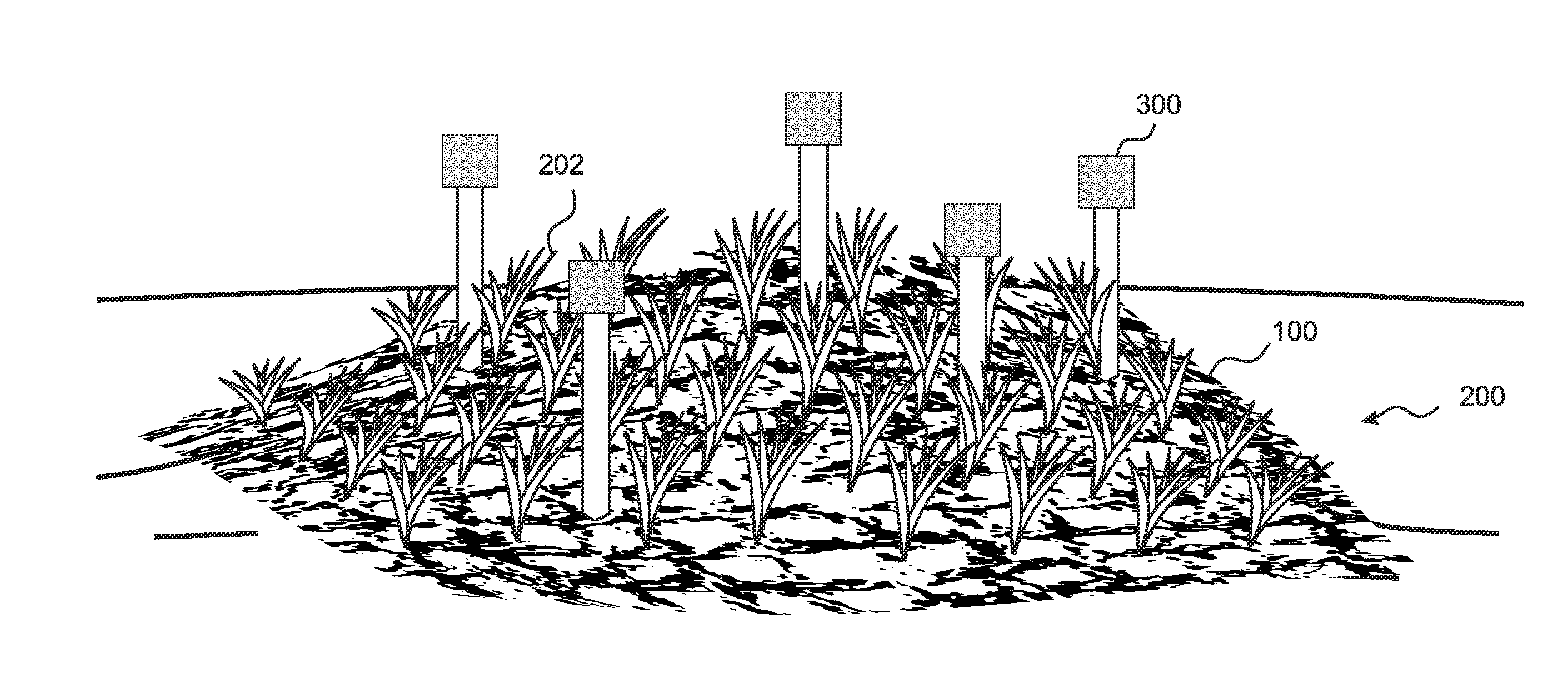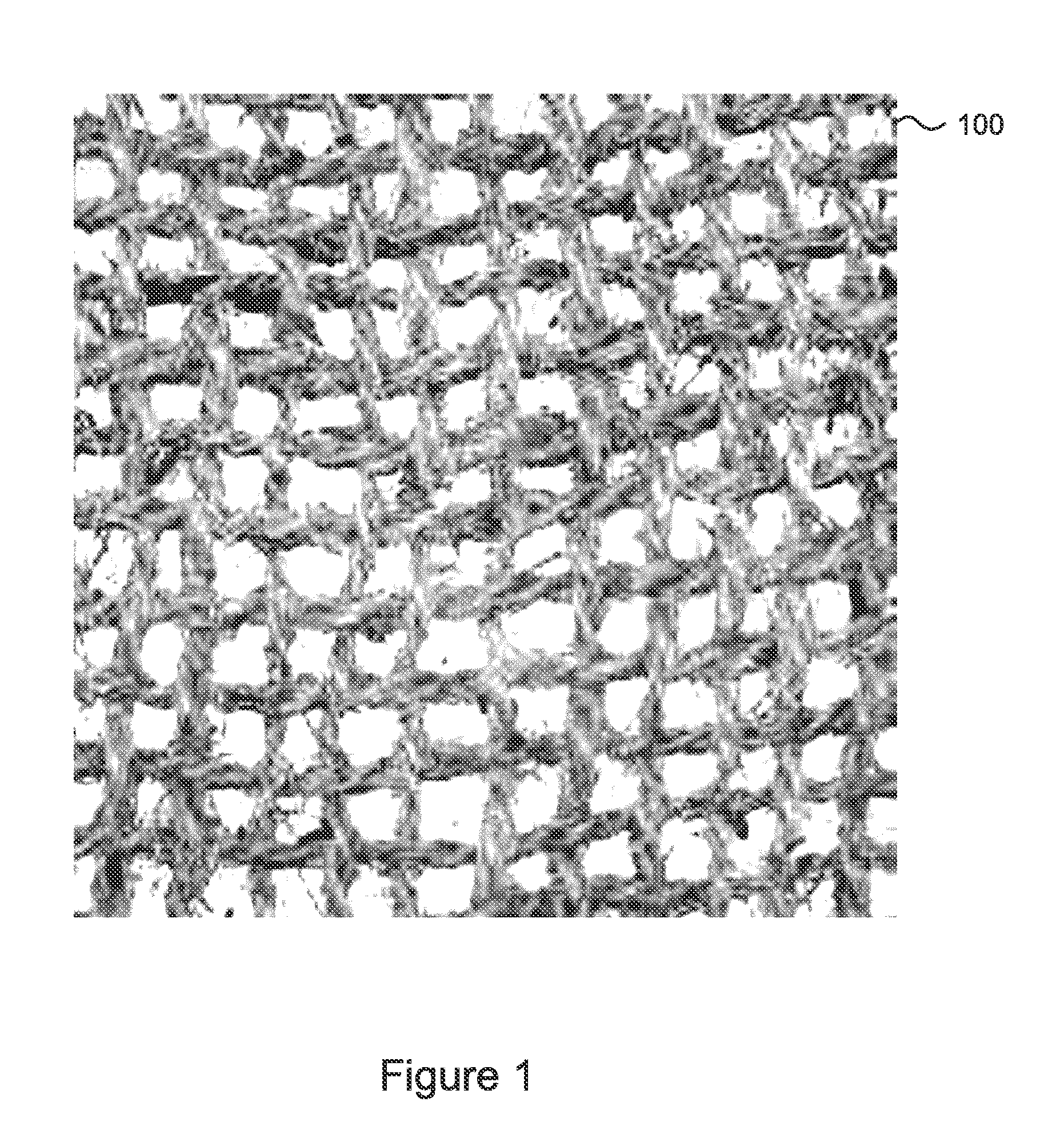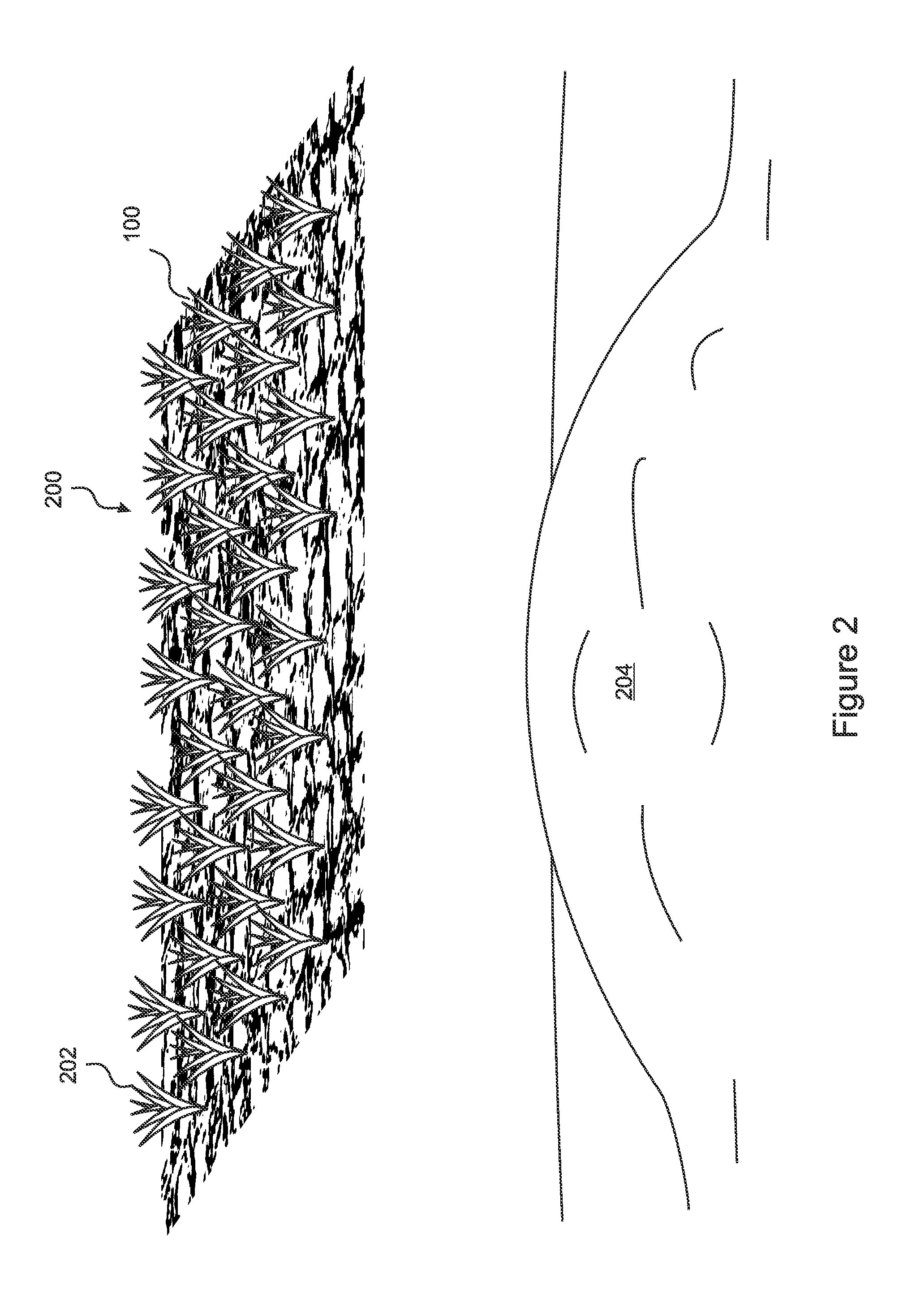Method for inhibiting shore erosion
a shoreline and erosion technology, applied in the field of beach, can solve the problems of large shoreline loss, unlivable property, and detrimental impact of shoreline loss on property values, and achieve the effect of reducing the impact of erosion on the shoreline and its ecosystem
- Summary
- Abstract
- Description
- Claims
- Application Information
AI Technical Summary
Benefits of technology
Problems solved by technology
Method used
Image
Examples
Embodiment Construction
[0033]The present invention is a method for introducing self-sustaining, shoreline-tolerant vegetation to coastal areas, so as to minimize the impact of erosion on the shoreline and its ecosystem. With reference to FIGS. 1 and 2, an eco-friendly sod mat 200 is prepared by allowing shoreline-tolerant vegetation 202 to sprout and take root in a biodegradable mat 100 under controlled conditions. In the embodiment of FIGS. 1 and 2, the mat is made from coir, and in the embodiment of FIG. 2, the vegetation 200 is sea grass. When the vegetation 202 is sufficiently mature to be self-sustaining, the sod mat 100 is transferred to the shoreline, where in some embodiments it is draped over a sand dune 204, as illustrated in FIG. 3. The sand dune 204 can be either a naturally occurring sand dune or a man-made dune.
[0034]In some embodiments, fertilizer is included with the mat. In other embodiments, bird roosting stakes 300 are planted with the sod mat 200 so as to encourage birds to roost over ...
PUM
 Login to View More
Login to View More Abstract
Description
Claims
Application Information
 Login to View More
Login to View More - R&D
- Intellectual Property
- Life Sciences
- Materials
- Tech Scout
- Unparalleled Data Quality
- Higher Quality Content
- 60% Fewer Hallucinations
Browse by: Latest US Patents, China's latest patents, Technical Efficacy Thesaurus, Application Domain, Technology Topic, Popular Technical Reports.
© 2025 PatSnap. All rights reserved.Legal|Privacy policy|Modern Slavery Act Transparency Statement|Sitemap|About US| Contact US: help@patsnap.com



